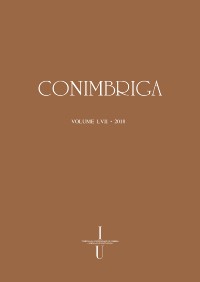Please use this identifier to cite or link to this item:
https://hdl.handle.net/10316.2/44480| DC Field | Value | Language |
|---|---|---|
| dc.contributor.author | Mantas, Vasco Gil | - |
| dc.date.accessioned | 2018-11-06T16:21:21Z | |
| dc.date.accessioned | 2020-09-23T01:26:49Z | - |
| dc.date.available | 2018-11-06T16:21:21Z | |
| dc.date.available | 2020-09-23T01:26:49Z | - |
| dc.date.issued | 2018 | - |
| dc.identifier.issn | 0084-9189 | - |
| dc.identifier.issn | 1647-8657 (PDF) | - |
| dc.identifier.uri | https://hdl.handle.net/10316.2/44480 | - |
| dc.description.abstract | A cidade de Ammaia, situada nos arredores de Marvão, conta com um razoável corpus epigráfico através do qual é possível analisar aspectos importantes do quotidiano luso-romano. No presente artigo reúne-se a informação disponível acerca das práticas religiosas urbanas durante o Alto-Império, verificando-se a coexistência, em ambientes públicos, de cultos indígenas e de cultos oficiais, com predomínio do culto de Júpiter, expoente destacado do legalismo romano na região. Como é natural, numa cidade de população maioritariamente indígena, os ofertantes dos monumentos, na maioria aras de desenho regularmente clássico, reflectem essa origem e vários graus de romanização, ou seja, de aculturação integradora que deve ser interpretada sem preconceitos anacrónicos. | por |
| dc.description.abstract | The city of Ammaia, in the outskirts of Marvão, Portugal, has a reasonable epigraphic corpus through which it is possible to analyze important aspects of the Lusitanian-roman quotidian. This paper gathers available information on the urban religious practices in the Early Roman Empire, where indigenous and official cults coexisted, with a predominance of the cult to Jupiter, the highest expression of the roman legalism in the region. As expected, in an indigenous-majority city, the offerors of the monuments, mostly altars of classic design, reflect that origin and differing degrees of Romanization, in other words, the integrative acculturation that should be interpreted without anachronistic prejudice. | eng |
| dc.language.iso | por | - |
| dc.publisher | Imprensa da Universidade de Coimbra | - |
| dc.rights | open access | - |
| dc.subject | Lusitania | eng |
| dc.subject | Ammaia | eng |
| dc.subject | Epigraphy | eng |
| dc.subject | Religion | eng |
| dc.subject | Society | eng |
| dc.subject | Lusitânia | por |
| dc.subject | Ammaia | por |
| dc.subject | Epigrafia | por |
| dc.subject | Religião | por |
| dc.subject | Sociedade | por |
| dc.title | A religião pagã na cidade de Ammaia (São Salvador de Aramenha, Marvão): pragmatismo político e multicultural funcional | por |
| dc.type | article | - |
| uc.publication.collection | Conimbriga vol. 57 | - |
| uc.publication.firstPage | 47 | - |
| uc.publication.lastPage | 96 | - |
| uc.publication.location | Coimbra | - |
| uc.publication.journalTitle | Conimbriga: Revista de Arqueologia | - |
| uc.publication.volume | 57 | por |
| dc.identifier.doi | 10.14195/1647-8657_57_2 | - |
| uc.publication.orderno | 2 | - |
| uc.publication.area | Artes e Humanidades | - |
| uc.publication.manifest | https://dl.uc.pt/json/iiif/10316.2/44480/235528/manifest?manifest=/json/iiif/10316.2/44480/235528/manifest | - |
| uc.publication.thumbnail | https://dl.uc.pt/retrieve/11515830 | - |
| item.grantfulltext | open | - |
| item.fulltext | With Fulltext | - |
| Appears in Collections: | Conimbriga | |
Files in This Item:
| File | Description | Size | Format | |
|---|---|---|---|---|
| a_religiao_paga_na_cidade_de_ammaia.pdf | 5.38 MB | Adobe PDF |  |
Items in DSpace are protected by copyright, with all rights reserved, unless otherwise indicated.
